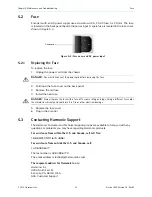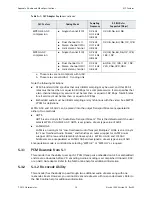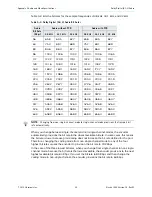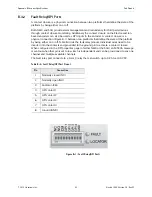
Chapter 4 Operating the Encoder
Using SAG
© 2012 Harmonic Inc.
31
Electra 1000, Version 3.0, Rev M
Figure 4-3: SAG Interface (representative display)
SAG contains three panes:
Header pane
. Across the top, this pane provides information on alarms and errors. The
Rebuild PSI button calls the Rebuild PSI mechanism on the device. Click the XML button
to see XML output options information.
Navigation pane
. Below the status pane, on the left, this pane has two sections:
The Platform section lists all cards installed on the devices. The Output Services section
lists all of the output streams (audio and video). Select an item in the Platform or Output
Services pane to view its properties in the Configuration pane.
Configuration Pane
. Besides the Navigation pane, this is the place you can trigger
actions on, and information about, items selected in the navigation pane. Use this pane to
apply configuration.
You can resize any pane by dragging the border of the pane up, down, left, or right.
To begin configuring the encoder, apply a template. Templates contain basic settings for all
encoder platform, port, and stream properties. After applying a template, customize the
settings for your environment.
Click the Help button in the Status pane for detailed instructions for configuring the encoder.
NOTE:
On PCs running Windows NT 4.0 with Internet Explorer 6.0, do not leave SAG open for extended
periods of time. When Internet Explorer is left open and connected to the Configuration Manager URL, the
web page continuously refreshes the alarm status display for the device, causing Internet Explorer to
slowly increase its memory usage on the client PC. While this increase in memory usage does not affect
the encoder, Harmonic does not recommend that SAG be open for long periods of time because it can
affect other processes on the control PC.






























